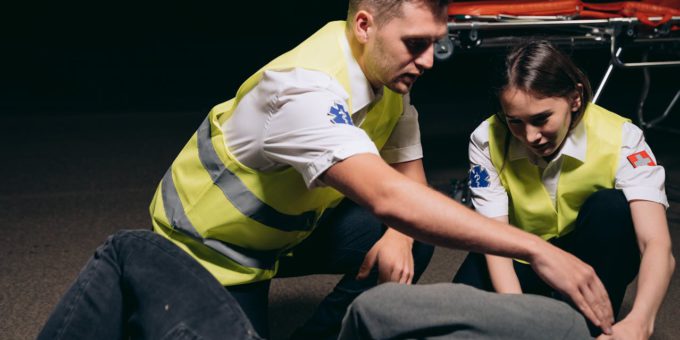
Raising public awareness about health education is vital to fostering a healthier society, and initiatives like diabetes management education play a crucial role. Equally important are programs such as an urgent care course, which empower individuals to respond effectively to medical emergencies in daily life. These efforts highlight the importance of making health education accessible and practical, ensuring everyone understands how to prioritise their well-being. Integrating these educational tools into communities can create a culture where informed decisions lead healthier lives.
Knowing the basics of mental, emotional, and physical health is part of being health conscious. It isn’t just about reacting to illness; it’s about fostering preventive care, recognising early warning signs, and promoting healthy lifestyles. For example, learning about nutrition and exercise can significantly reduce the risk of chronic conditions like diabetes and heart disease. Also, widespread health education can address societal challenges, such as obesity or substance abuse, by equipping people with the knowledge they need to make better choices.
Programs like diabetes management education exemplify the importance of tailored health awareness initiatives. These programs teach individuals how to manage their condition and empower families and caregivers to support loved ones effectively. Similarly, an urgent care course equips participants with the skills to handle injuries or sudden health crises, enhancing community resilience in emergencies.
Transforming lives through health awareness means making education integral to daily routines. This notion can include simple actions like promoting hydration, encouraging regular health check-ups, or fostering open discussions about mental health. For example, workplaces can organise wellness programs that educate employees about stress management or ergonomic practices. Schools can introduce age-appropriate health education to instil good habits early on, such as the importance of a balanced diet and regular physical activity.
Community centres and local organisations are also pivotal in spreading health awareness. Hosting workshops on first aid, CPR, or chronic disease prevention makes valuable knowledge accessible to diverse groups. Incorporating digital tools, such as mobile apps or online resources, can further expand the reach of these initiatives.
Preventive education is at the heart of health awareness. It focuses on equipping individuals with the knowledge and tools to avoid illness rather than treating it after onset. For instance, educating the public about the risks of smoking, excessive alcohol consumption, or sedentary lifestyles can significantly reduce the prevalence of preventable diseases.
 Vaccination campaigns, regular health screenings, and awareness drives are examples of preventive education. By emphasising early detection and timely intervention, such efforts reduce the burden on healthcare systems and improve overall public health outcomes.
Vaccination campaigns, regular health screenings, and awareness drives are examples of preventive education. By emphasising early detection and timely intervention, such efforts reduce the burden on healthcare systems and improve overall public health outcomes.
One of the most significant challenges in health awareness is addressing disparities in health literacy. Many people need basic knowledge to navigate healthcare systems or interpret medical advice. This gap can lead to delayed treatments, poor health outcomes, and increased costs.
Health education programs can bridge this gap by simplifying and presenting complex medical information in culturally relevant ways. For instance, visual aids, infographics, or community advocates can make critical health messages more accessible. Providing resources in multiple languages or tailoring programs to specific demographics ensures inclusivity and equity. Integrating health education into digital platforms can also reach wider audiences. Online courses, webinars, and social media campaigns are potent tools for spreading accurate and engaging health information.
Health awareness becomes even more critical during crises like pandemics, natural disasters, or public health emergencies. The COVID-19 pandemic highlighted the importance of widespread health education in managing misinformation and promoting safe practices. Clear communication about hygiene measures, vaccination benefits, and social distancing protocols helped save countless lives. In such situations, urgent care courses prove invaluable. They prepare individuals to respond quickly and effectively, whether administering first aid, managing trauma, or stabilising someone until professional help arrives. Empowering communities with these skills enhances collective preparedness and resilience.
A neglected but equally important component of health education is mental health awareness. Stress, anxiety, depression, and other mental health challenges can profoundly impact physical well-being. Raising awareness about mental health destigmatises seeking help and encourages open conversations about emotional struggles. Programs focusing on mindfulness, stress management, and coping strategies can support individuals in maintaining cognitive health. Schools, workplaces, and communities can integrate these programs to foster environments prioritising psychological well-being and physical health.
Achieving widespread health awareness requires collaboration across sectors. Governments, healthcare providers, educational institutions, and community organisations must work together to design and implement effective programs. Partnerships between private companies and public health agencies can also amplify the reach of health campaigns. For example, businesses can sponsor wellness workshops or distribute informational materials. On an individual level, everyone can contribute by sharing accurate information, volunteering for health awareness events, or simply adopting healthier practices and inspiring others to do the same.
Health awareness is a transformative tool that empowers individuals and communities to lead healthier, more informed lives. Initiatives like diabetes management education demonstrate the profound impact of accessible and practical health education. By integrating these efforts into daily life, emphasising preventive care, and addressing health literacy gaps, we can create a society where well-being is a shared priority.
Through collaboration, innovation, and persistence, health awareness can pave the way for a future where everyone has the knowledge and resources to thrive. Whether making minor changes to personal habits or participating in broader educational campaigns, every step toward greater awareness contributes to a healthier world.




